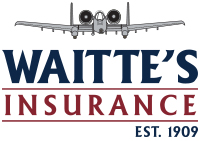
As the holidays are in full swing, the majority of us are thinking about gift shopping, visiting with family and loved ones, and the overall feeling of joy amplified by festive holiday music and warmth. However, it is important to remember that with all of the blessings that the holidays can bring, there are always those who have little to be cheerful about. From people facing hunger and homelessness to those battling life-threatening illnesses, the holidays can once again be the ‘most wonderful time of the year’ with our help. As you appreciate what you have this season, a little effort can go a long way by donating or volunteering to any of these charitable organizations:
 1. The Salvation Army
1. The Salvation Army
The Salvation Army was established in 1865 as an evangelical Christian organization with the goal of supporting people in need with social services, which include food aid, disaster relief, assistance for the disabled, help for the ill and elderly, clothing and shelter for the homeless, and opportunities for underprivileged children. The organization’s store uses 82 cents of every dollar for these services, which provide help for over 130 million people in 5,000 communities across the country. You can help The Salvation Army in Norwich by volunteering at their holiday store, open December 11-24, or by donating at any time. Furthermore, by shopping at The Salvation Army, you help support the people receiving donations or assistance from this organization. Learn more by visiting ctri.salvationarmy.org/SNE/.
 2. The Wounded Warrior Project
2. The Wounded Warrior Project
The Wounded Warrior Project helps injured veterans or service members heal after serving their country on or after the attacks of September 11, 2001. Through projects that support the four pillars of mind, body, economic empowerment, and engagement, the organization helps veterans adjust to life with a service-related injury. You can help by donating to the organization or volunteering at one of their numerous events. Visit www.woundedwarriorproject.org for full details.
3. Save the Children
Save the Children helps support children facing hunger, disease, homelessness, abuse, and a lack of education in the United States and around the world. If you’re looking to help, visit www.savethechildren.org for fundraising tips and other ways to make a difference.
![]() 4. The Pink Fund
4. The Pink Fund
The Pink Fund provides financial support to women who are diagnosed with breast cancer and their families. They assist in paying for medical bills and other devastating financial losses for breast cancer patients so that their main focus is on healing and recovery. The Norwich branch of this organization needs your help with donations and volunteering at their awareness programs. To learn more, go to www.thepinkfund.org.
5. Connecticut Food Bank
One out of seven people struggles with hunger daily in the state of Connecticut. The Connecticut Food Bank provides food and other services for those who need, and deserve a warm meal and care during the holidays. You can become part of the solution by donating food, funds, or even your time to the Connecticut Food Bank by visiting www.ctfoodbank.org.
Together, we CAN make a difference in the lives of those in need! Waitte’s Insurance Agency wishes you and your family a festive December and the happiest of New Years! And remember, always drive safely and responsibly before and after holiday celebrations.

 The passing of the Affordable Care Act, the launch of HealthCare.gov, and the establishment of numerous health insurance marketplaces all marked important changes in the infrastructure of health insurance around the country. More changes are coming in 2016, partly as a result of government changes on the national level and partly because of market shifts in response to these changes. Thankfully, you can make sure that you stay ahead of the curve by keeping track of the expected health insurance changes in 2016, including these five important projections:
The passing of the Affordable Care Act, the launch of HealthCare.gov, and the establishment of numerous health insurance marketplaces all marked important changes in the infrastructure of health insurance around the country. More changes are coming in 2016, partly as a result of government changes on the national level and partly because of market shifts in response to these changes. Thankfully, you can make sure that you stay ahead of the curve by keeping track of the expected health insurance changes in 2016, including these five important projections: When you have snow on your roof, it should melt gradually and drain into your gutters. If you have ice dams, though, melted snow isn’t able to drain properly. Ice dams form when parts of your roof near the top are warmer than the rest, causing snow in those areas to melt faster. Melted snow then runs down toward the eaves, which are colder, where it freezes and forms blockages called ice dams. These dams block additional melted snow from being able to drain into your gutters, causing it to flow under the eaves and potentially damage your home’s interior. Fortunately, you can take the following steps to prevent ice dams from forming.
When you have snow on your roof, it should melt gradually and drain into your gutters. If you have ice dams, though, melted snow isn’t able to drain properly. Ice dams form when parts of your roof near the top are warmer than the rest, causing snow in those areas to melt faster. Melted snow then runs down toward the eaves, which are colder, where it freezes and forms blockages called ice dams. These dams block additional melted snow from being able to drain into your gutters, causing it to flow under the eaves and potentially damage your home’s interior. Fortunately, you can take the following steps to prevent ice dams from forming. The month of February is American Heart Month, which means that it’s time to start thinking about how your habits impact your heart health and what you can do to improve those habits. Heart month was established by The
The month of February is American Heart Month, which means that it’s time to start thinking about how your habits impact your heart health and what you can do to improve those habits. Heart month was established by The  Climate change is an issue that often seems far away. We always hear about melting ice caps and rising sea levels, but few people realize that it is a pressing issue around the entire world. The winter of 2015-2016 tied as the hottest year on record for Connecticut, with an average temperature of 35.2 degrees Fahrenheit – and the three warmest winters in the state’s history have all occurred within the last 15 years. These changes show that climate change is a real threat and it is becoming stronger every day. However, that doesn’t mean that it’s too late to do your part to help slow the gradual warming of the earth. Here are several tips for fighting climate change on an individual level.
Climate change is an issue that often seems far away. We always hear about melting ice caps and rising sea levels, but few people realize that it is a pressing issue around the entire world. The winter of 2015-2016 tied as the hottest year on record for Connecticut, with an average temperature of 35.2 degrees Fahrenheit – and the three warmest winters in the state’s history have all occurred within the last 15 years. These changes show that climate change is a real threat and it is becoming stronger every day. However, that doesn’t mean that it’s too late to do your part to help slow the gradual warming of the earth. Here are several tips for fighting climate change on an individual level. Many businesses and many employees get confused about the differences between Worker’s Compensation Insurance and Employers’ Liability Insurance. For a business, it’s important to not only know the difference between these two policies but also understand that they go hand-in-hand and are sold together to effectively protect the business and its employees.
Many businesses and many employees get confused about the differences between Worker’s Compensation Insurance and Employers’ Liability Insurance. For a business, it’s important to not only know the difference between these two policies but also understand that they go hand-in-hand and are sold together to effectively protect the business and its employees. New England residents know how long winters in the region last – and yet, it is still disappointing every year when “spring” rolls around but it’s still too cold to use your boat out on the water, or enjoy other activities outdoors. Thankfully, however, winter has lingered in Connecticut for long enough this year, and fun-filled times in the sun are just over the horizon. If you’re looking forward to using your boat soon, you should keep these important tips in mind for de-winterizing your boat and preparing for boating season.
New England residents know how long winters in the region last – and yet, it is still disappointing every year when “spring” rolls around but it’s still too cold to use your boat out on the water, or enjoy other activities outdoors. Thankfully, however, winter has lingered in Connecticut for long enough this year, and fun-filled times in the sun are just over the horizon. If you’re looking forward to using your boat soon, you should keep these important tips in mind for de-winterizing your boat and preparing for boating season.